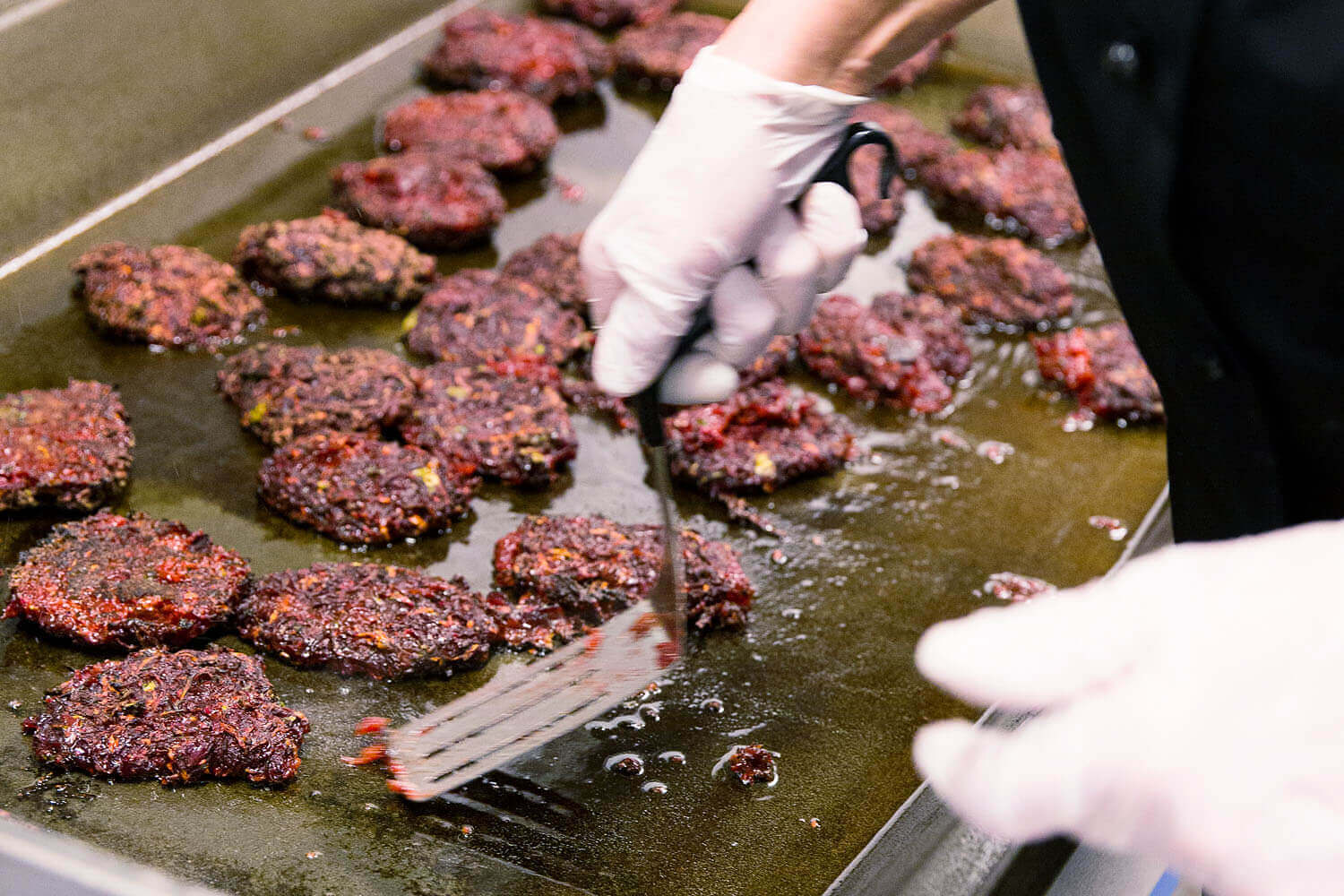
Air purification and heat recovery in commercial kitchens
Introduction.
The city of Gothenburg has opted to build a brand new kitchen and canteen at the Hovåsskolan school as the old one did not meet the requirements. The objective is to reduce energy use by 50 percent compared to the old kitchen.
Saving Energy at Hovåsskolan
“Our goal with Hovåsskolan’s new kitchen is to generate as much energy savings as possible based on our very tough energy requirements,” says Johan Gunnebo, energy expert and project manager. “If we achieve this the way we intend to, we can create a new standard based on Hovåsskolan’s energy use. This is why we are going all in here.”
“At the same time, it is of vital importance that the kitchen staff be completely on board. That they experience that the kitchen works to their satisfaction. We will not reach this objective without their assistance.
Compliance with the tough energy requirements at Hovåsskolan requires, among other things, a well-functioning ventilation system as well as heat recovery of extract air from the kitchen. The facility management has installed a heat exchanger with very high efficiency (90-95 percent) along with an ozone treatment system.
“The ozone treatment system is here to guarantee the trouble-free operation of the heat exchanger,” says Johan Gunnebo. “There are several methods for cleaning extract air, but in our opinion, ozone treatment is the most practical one, and we are also sure that it works.”
The problem.
Measurements in the project Energy Efficient Commercial Kitchens, co-funded by Belok and the Swedish Energy Agency, indicate that Sweden’s municipalities could save almost EUR 60,000 daily if they improved the energy efficiency of their commercial kitchens.
Ventilation stands for a large portion of each commercial kitchen’s energy use, a figure that can be reduced through heat recovery of extract air. This is also something the Swedish Energy Agency’s Procurement Group for Commercial Buildings, Belok, recommends in its commercial kitchen guidebook. But in order to be able to recover the heat from a commercial kitchen’s extract air, we must first break down the grease in the cooking off-gas. Ozone provides an effective way of breaking down pollutants.
The grease creates other problems too. Grease deposits burn intensely and is hard to put out. The continuous breakdown of grease in extract air reduces the fire hazard and makes your property safer. The Hovåsskolan school in Gothenburg has opted for ozone treatment with a system from Ozonetech.
One of the toughest environmental and energy requirements in the country
The municipality of Gothenburg City has set high objectives for reducing its climate load. Energy use (primary energy) must be reduced by 14 per cent in residential and commercial buildings and 90 % of the carbon dioxide emissions must be eliminated by 2020 compared to 2009.
“We have one of the toughest energy and environmental requirements with regard to buildings – 45 kWh/m2, anually including building services”, says Johan Gunnebo, energy expert and project manager at Gothenburg City. “And we also calculate energy use more strictly than required in the Building Regulations of the Swedish National Board of Housing, Building and Planning (BBR). An extremely tough goal!”
“Buildings can comply, but we see a potential for improvements in commercial energy use.” TO REACH the goals, the City builds as energy-efficient structures as possible and optimizes heating and ventilation on its properties. But energy-efficient construction is not enough. In addition to having Sweden’s toughest energy requirements for buildings, the City is under way with the development of Sweden’s best system for ensuring that the energy targets are met. It is a package of measures that includes, among other things, early operational optimisation and a completely new energy follow-up system.
“We are working on this at the moment and aim to be ready with it by the middle of 2017”, says Johan Gunnebo. “To be sure we are on the right track we need to implement a number of actions including, for example, making continuous measurements. We have great demands on our energy use!”
The solution.
“There used to be lots of on/off functions in commercial kitchens before, which made recovery of the hot and greasy extract air impossible,” says Tobias Bodén, CEO at Andersson & Hultmark. But the project at Hovåsskolan has been dominated by a sustainable way of thinking. “This means, among other things, that we have effected energy optimizations in each kitchen hood individually and have installed a high-efficiency rotating heat exchanger for extract air recovery. But heat recovery here required that we clean the extract air at each hood. We solved this challenge using ozone. The ozone meets the greasy extract air right at the source and immediately eliminates it.”
“If we had instead opted to transport the extract air through the ducts to a central treatment installation, the grease would stick to the inside of the duct, generating a greater fire hazard and higher maintenance costs. By scrubbing the extract air at the kitchen hoods, it is also possible to give the ducts a lower fire classification which then makes it possible to lower the material classification and amount of insulation due to the lower fire risk.

Evaluation.
To reduce energy use in commercial kitchens, the Swedish Energy Agency’s Procurement Group for Commercial Buildings, Belok, recommends heat recovery of extract air. This, combined with demand-controlled ventilation, makes it possible to strongly reduce the kitchen’s energy needs. Hovåsskolan has installed a heat exchanger that recovers 90 to 95 per cent of the thermal energy in the extract air.
Cooking fumes contain grease and odors that accompany the extract air into the extract duct. Without air treatment, the grease is collected in the ducts and on the thin blades of the heat exchanger. To ensure trouble-free operation and high efficiency of the heat exchanger, it is necessary to clean the extract air from grease. Ozone treatment is an efficient and reliable method that is particularly suitable for tough commercial kitchen environments. All components are located outside the ventilation system, and it is only the ozone that is injected into the dirty air stream. The design minimises the need for maintenance and cleaning.
The task of the ozone is to break down pollutants in the cooking fumes. Ozone is produced by an ozone generator and is then injected into the closed extract duct. When it “collides” with the pollutant, the ozone breaks down the grease in the air, immediately scrubbing it. Translated in chemical terms, this is an oxida- tion process that results in the generation of water vapors and carbon dioxide as residual products. The thermal energy in the purified extract air can now be recovered in a heat exchanger and fed to the cold supply air.
Clean ducts prevent fire
Grease has just as much energy as diesel oil, it burns easily and is difficult to put out. Preventing fire is therefore an additional important reason for installing ozone treatment. Cleaning the extract ducts from grease reduces both the fire hazard and the need for chimney-sweeping.
Safe use
The ozone is guided in behind the grease filter in the duct and then sucked away by the ventilation. Extract air is only cleaned when the ventilation is operational. A pressure switch on the extract duct detects the negative pressure created when the fan is working, which makes it possible for the ozone treatment to start. If there is no negative pressure, the system will not start.
The ozone treatment is therefore only carried in the closed duct system, and there is never any ozone in the kitchen. We also recommend the installation of an ozone sensor to detect if there is any ozone in the kitchen air. If an error occurs, the ozone production turns off automatically.
The Swedish Work Environment Authority has developed hygienic limit values for ozone in indoor air or, in other words, acceptable average levels. The limit value for eight hours in a workplace is 0.1 ppm* (AFS 2018:1).






